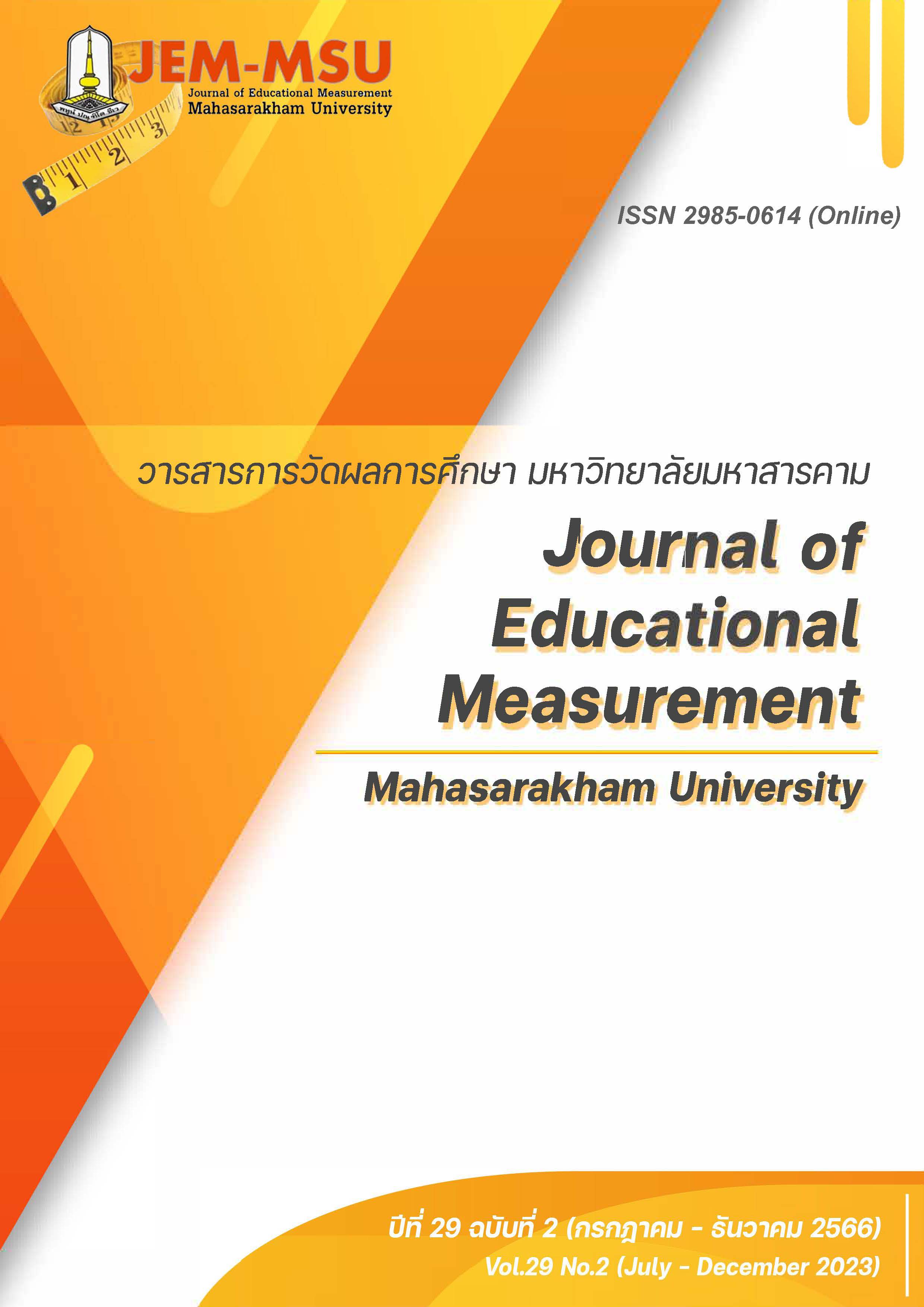The Development of System and Mechanisms Supporting the Internal Evaluation Implementation for the Administration Practice of Health Promotion Programs for the Specific Populations
Main Article Content
Abstract
Monitoring and evaluation (M&E) is a significant tool in providing effective project management. This action research aimed (1) to develop monitoring and evaluation capacity development of evaluators, project directors, and stakeholders of Health Promotion Programs for specific populations and (2) to develop the system and mechanisms supporting the monitoring and internal evaluation for projects under the Health Promotion Programs for specific populations. The study was divided into three phases. Phase I, pre-training, eleven projects under the Health Promotion Programs for the Specific Populations in the fiscal year B.E. 2563–2564 were selected, a total of 49 participants were recruited, which composed of evaluators, project directors, and stakeholders. Phase II, monitoring and evaluation capacity development trainings, the trainings comprised of four modules. The research instruments used were: (1) trainee satisfaction questionnaire, (2) trainee learning outcomes questionnaire, (3) individual abilities evaluation form, and (4) group abilities evaluation form. Data were analyzed using descriptive statistics. Phase III, post-training, a total of three online focus groups were conducted with 24 participants, where each focus group composed of evaluators and project directors. Focus group interview guides were used and the data were analyzed using content analysis, classifying codes into themes, and interpreting the data. The results showed that trainees’ knowledge scores after received the training in monitoring and evaluation were increased for all contents. The criteria for acceptable good ability were 80% or higher. Thirty-seven trainees (76.40%) had good abilities regarding to individual abilities, and in terms of group abilities, seven projects (63.63%) had good abilities. Moreover, the developed system and mechanisms supporting monitoring and internal evaluation should consist of five mechanisms: (1) recruiting projects and trainees, (2) offering learning resources, (3) creating a group chat, (4) providing coach for each project, and (5) conducting site visits. Focusing in the ability of practitioner evaluators, change in project management, and installing the system of monitoring and internal evaluation can lead to imperative changes in system and mechanisms supporting the monitoring and internal evaluation.
Article Details

This work is licensed under a Creative Commons Attribution-NonCommercial-NoDerivatives 4.0 International License.
The content and information contained in the published article in the Journal of Educational Measurement Mahasarakham University represent the opinions and responsibilities of the authors directly. The editorial board of the journal is not necessarily in agreement with or responsible for any of the content.
The articles, data, content, images, etc. that have been published in the Journal of Educational Measurement Mahasarakham University are copyrighted by the journal. If any individual or organization wishes to reproduce or perform any actions involving the entirety or any part of the content, they must obtain written permission from the Journal of Educational Measurement Mahasarakham University.
References
American Evaluation Association. (2018). AEA Evaluator Competencies. https://www.eval.org/About/Competencies-Standards/AEA-Evaluator-Competencies
Barrington, G.V. & Triana-Tremain, B. (2023). Evaluation time: A practical guide for evaluation. Sage.
Creswell, J.W., & Guetterman, T.C. (2019). Educational research: Planning, conducting, and evaluating quantitative and qualitative research (6th ed.). Pearson.
Creswell, J.W., & Poth, C.N. (2018). Qualitative inquiry & Research design: Choosing among five approaches (4th ed.). Sage.
Kelly, L.M., & Rogers, A. (2022). Internal evaluation in non-profit organizations: Practitioner perspectives on theory, research, and practice. Routledge.
Kerins, J., Smith, S.E., Stirling, S.A., Wakeling, J., & Tallentire, V.R. (2021). Transfer of training from an internal medicine boot camp to the workplace: Enhancing and hindering factors. BMC Medical Education, 21,1-12. https://doi.org/10.1186/s12909-021-02911-5
Kirkpatrick, D.L. & Kirkpatrick, J.D. (2006). Evaluating training programs: The four levels (4th ed.). Berrett-Koehler.
Love, A.J. (1991). Internal evaluation: Building organizations from within. Sage.
Morra Imas, L.G., & Rist, R.C. (2009). The road to results: Designing and conducting effective development evaluations. The World Bank.
Vignoli, M. & Depolo, M. (2019). Transfer of training process. When proactive personality matters? A three-wave investigation of proactive personality as a trigger of the transfer of training process. Personality and Individual Differences, 141, 62 – 67. https://doi.org/10.1016/j.paid.2018.12.027
Jiawiwatkul, A. (2014). Happy Workplace Reader’s Digest Book 6. P.A. Living Co., Ltd. (in Thai)
Kunwittaya, S., & Mapaisalsrap, L. (2014). Happy Workplace Reader’s Digest Book 3. P.A. Living Co., Ltd.. (in Thai)
Un-ob, P. (eds.). (2021). Internal evaluation: A tool for learning and development of Health Promotion Programs. P.A. Living Co., Ltd. (in Thai)
Un-ob, P., Prapasuchat, N., Wisartsakul, W., & Siriwong, S. (2022). Internal evaluation-focused capacity development approach for the task force working in strategic operation to empower network members and leaders of specific populations with unique needs and contexts (2561 – 2563 B.E.) Thai Health Promotion Foundation. Journal of Educational Measurement Mahasarakham University, 28(1), 175 – 187.


